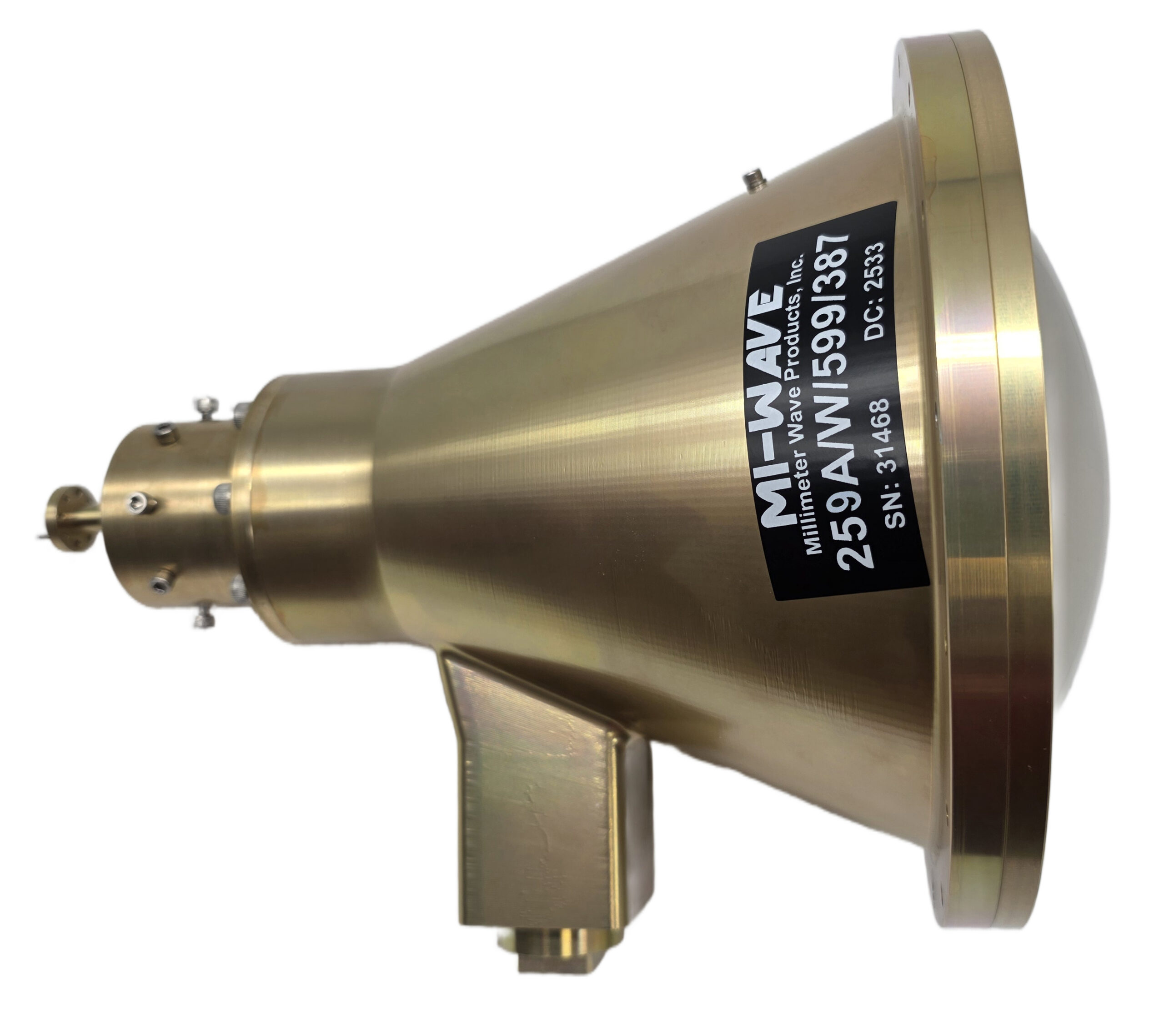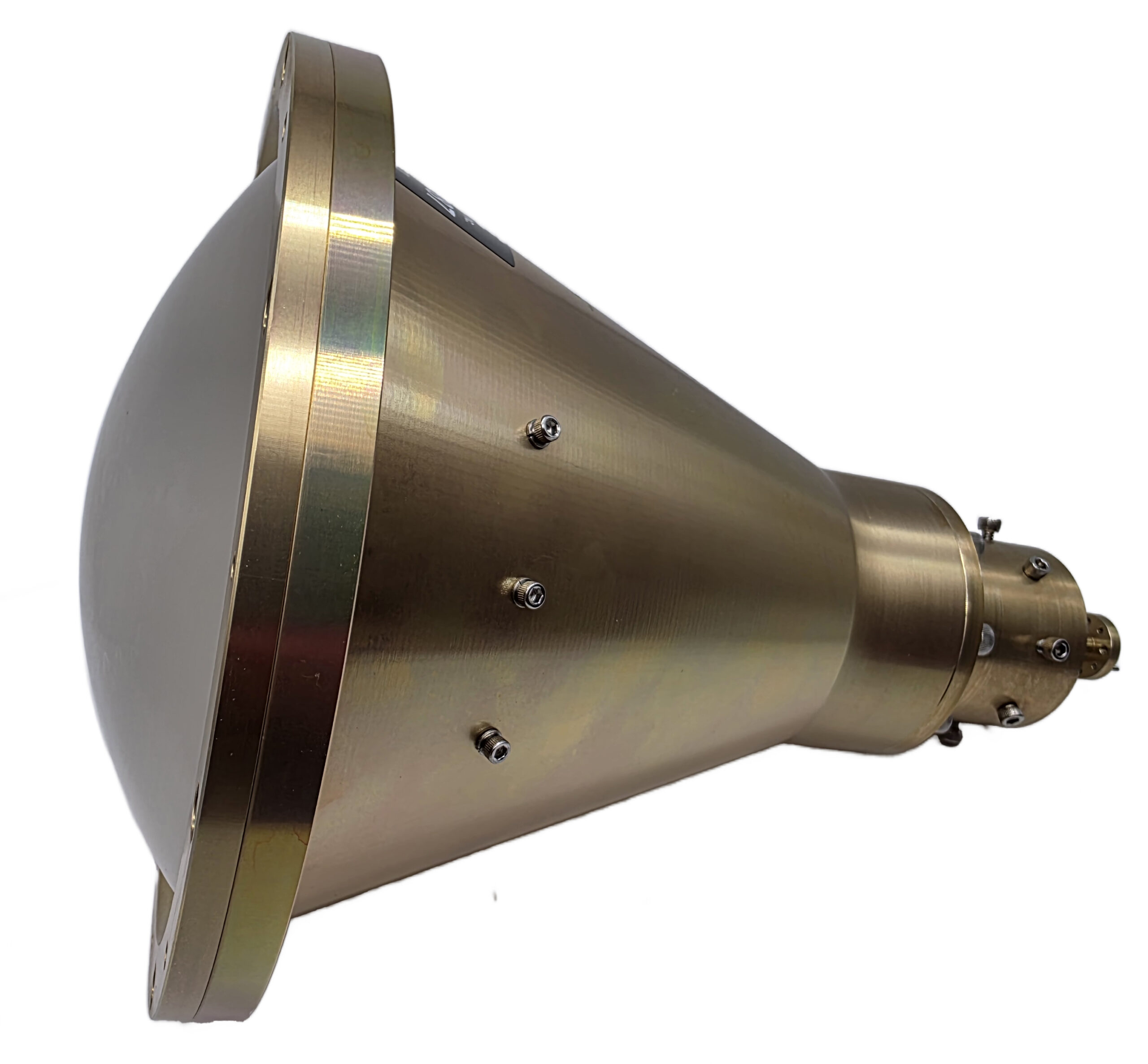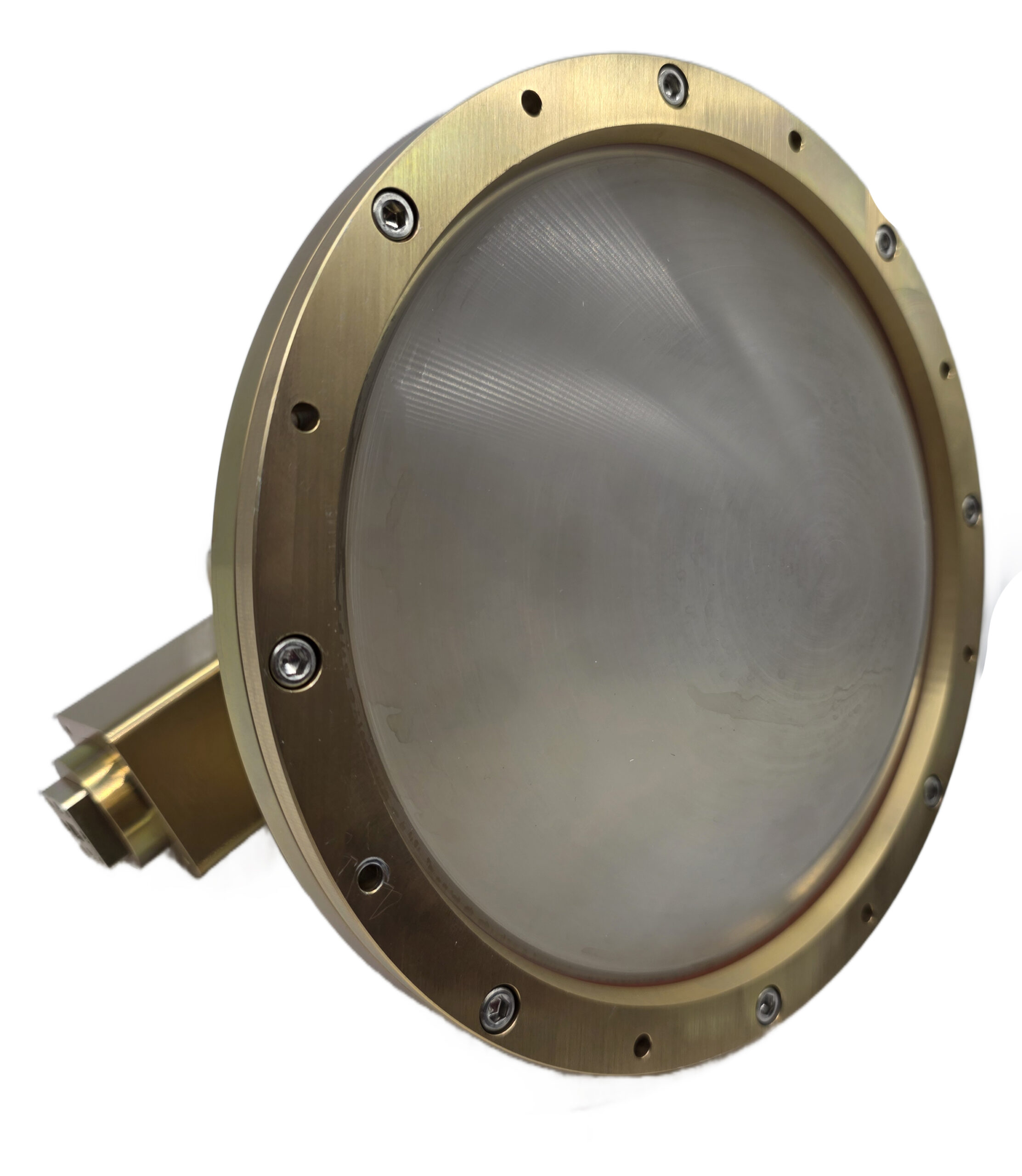Description
Dual-feed, dual-frequency wideband horn lens antennas provide a compact, high-performance solution for multi-band RF systems operating from 10 GHz to 170 GHz. These antennas combine a broadband horn design, precision dielectric lens shaping, and a dual-port feed architecture to deliver high gain, low sidelobe levels, and excellent polarization purity across multiple frequency bands using a single physical aperture.
This integrated approach allows system designers to support multiple RF functions while reducing antenna count, conserving space, and simplifying overall system architecture.
Note: The antennas shown represent only a portion of Mi-Wave’s dual-feed and wideband horn lens antenna offerings. Custom designs are available to support unique frequency bands, dual-band combinations, gain targets, and system-specific requirements.
Dual-Feed Architecture
The dual-feed configuration uses two physically independent feed ports, each capable of operating on its own RF channel. This allows support for different frequency bands or orthogonal polarizations, such as vertical and horizontal, without requiring additional antennas.
By consolidating multiple RF paths into a single aperture, the dual-feed architecture:
-
Reduces platform size and weight
-
Minimizes mechanical complexity
-
Improves system integration and alignment
-
Supports flexible multi-band or multi-polarization operation
Dual- and Four-Frequency Operation
Dual-Frequency Mode
In dual-frequency operation, each feed port is optimized for a dedicated frequency band. For example:
-
Port A operating in W-Band
-
Port B operating in Ka-Band
This configuration enables simultaneous or switchable multi-band operation using a single antenna aperture.
Four-Frequency Mode
Four-frequency operation is achieved by integrating a diplexer on each feed port. Each diplexer splits the RF path into two sub-bands, resulting in:
-
Two frequency bands on Port A
-
Two frequency bands on Port B
This configuration supports four independent operating bands from a single antenna, enabling uplink, downlink, telemetry, and auxiliary RF functions simultaneously while maintaining isolation and minimizing cross-interference.
Scalable Aperture Options
These horn lens antennas are available with standard lens diameters of 6, 9, and 12 inches, allowing performance to be scaled to meet specific gain and beamwidth requirements.
-
6-inch lens
Compact and lightweight, well suited for mobile platforms or space-constrained systems. -
9-inch lens
Balanced size-to-gain ratio for general-purpose RF, radar, and communication applications. -
12-inch lens
Highest gain and narrowest beamwidth, ideal for long-range links and precision measurement systems.
Key Technical Advantages
-
Independent optimization for each frequency band, ensuring optimal performance per channel
-
Minimal intermodulation through physical feed separation and diplexing
-
High gain with narrow beamwidth and low sidelobe levels
-
Excellent polarization purity
-
Compact integration into existing radar, satellite, and RF test platforms
*Actual product may be different from the image shown per customers specifcations
*All data presented is collected from a sample lot.
* Actual data may vary unit to unit, slightly.
*All testing was performed under +25 °C case temperature.
*Consult factory to confirm if material, plating, size, shape, orientation and any electrical parameter is critical for the application as website information is for reference only.
*Millimeter Wave Products, Inc. reserves the right to change the information presented on website without notice as we continue to enhance the performance and design of our products.
What This Antenna Does
Dual-feed, dual-frequency wideband horn lens antennas enable simultaneous or multi-band RF operation from a single physical aperture. By combining independent feed paths with a lens-corrected horn structure, these antennas efficiently transmit and receive signals across multiple frequency bands while maintaining high gain, stable beam patterns, and strong isolation between channels.
This design allows RF systems to support uplink and downlink paths, multiple radar functions, or parallel test bands without deploying separate antennas. The result is improved system efficiency, reduced platform size, and simplified RF architecture while preserving high-performance radiation characteristics across the full 10 GHz to 170 GHz operating range.
Why Choose Mi-Wave
Mi-Wave is a trusted manufacturer of microwave and millimeter-wave antennas and RF components, supporting advanced communication, radar, and test systems worldwide. Our dual-feed horn lens antennas are designed, manufactured, and tested to meet the performance and reliability demands of high-frequency, multi-band applications.
Engineering-Driven Design
Each antenna is developed with careful attention to electromagnetic performance, feed isolation, lens shaping, and mechanical precision, ensuring consistent gain, low sidelobe levels, and excellent polarization purity across all operating bands.
Broad Frequency Expertise
With product coverage extending from microwave through millimeter-wave frequencies, Mi-Wave brings deep experience supporting systems operating from 10 GHz up to 170 GHz, including complex multi-band and dual-port architectures.
Custom Configurations Available
Mi-Wave offers custom antenna solutions to support specific frequency combinations, diplexing requirements, polarization schemes, mechanical interfaces, and environmental conditions. Our sales engineering team works directly with customers to ensure the antenna integrates seamlessly into the overall system design.
Proven Manufacturing and Test Capability
All antennas are built using precision manufacturing techniques and validated through rigorous testing to ensure repeatable performance. This commitment to quality makes Mi-Wave a reliable partner for production programs, system integration, and advanced RF research.




